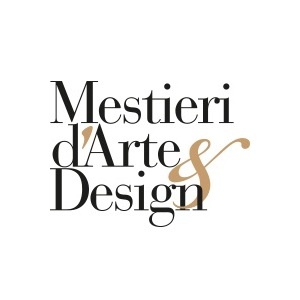THE WORKSHOP OF WONDERS WILL SAVE US.
To define our future by drawing inspiration from the great masters of the past is the only way to contrast the nihilism of the soul.
it is a news by www.mestieridarte.it
The Métier d’Art is a living matter. In fact it is life itself. Man-mind-matter is Franz Botré’s mantra. And the director and editor of Swan Group (link: www.arbiter.it) is the man who, together with Franco Cologni and the prestigious eponymous Foundation (link: www.fondazionecologni.it), conceived this magazine (link: www.mestieridarte.it), which is an ode to beauty.
Man can think and imagine. Man elaborates ideas in his mind, develops and moulds them, cuts, sews, directs, interprets and adapts. In other words, man creates. Matter can be shaped into small but beautiful masterpieces of ingenuity. This ancient yet contemporary liturgy is expressed in modern design, the alchemical formula that gives new life to the workshop because it is the most fitting and elegant definition of the concept that encompasses production and trade, which has made our cities indeed our civilizations, great. Let us take a look around us, in Italy and indeed the whole world.
It is important to understand what “to learn and train in the workshop” really means. In the fifteenth century, Leonardo da Vinci was educated in the studio of Verrocchio, Michelangelo learned from Ghirlandaio. The workshop was were teaching, learning, testing, experimenting, collaboration and the creation of one’s identity took place. They were painters, artists. But they were experimenting with new techniques every day, stimulated by the requests of their customers.
Other artisans lived and worked with them, master carpenters, masons, builders. Look at the historical heart of any city. A simple task in my case , talking about my hometown Florence. Brunelleschi’s Cupola, the harmony of the Baptistery (originally a temple dedicated to the god Mars), the Tower of Arnolfo which soars above Palazzo Vecchio since the Middle Ages. The frescoes. The wrought iron. The sculpted marble. The stained glass windows.
Think. Think carefully. There weren’t any universities with specialisation courses. There was no such thing as a faculty of engineering or architecture. And then they hauled tonnes of marble into the air. Blocks that formed graceful designs. There was no industry. But look at what has remained. The woodwork, the inlays, the gilded altarpieces in the Sacristy of San Lorenzo are absolute masterpieces, regardless of who made them.
Where did those artisans learn their craft? Where did the learn the secrets of those techniques?
At the workshop. This essential concept alone will allow us to reinforce mankind’s true heritage, the Métier d’Art.
We should look at how Japan safeguards “living national treasures”, namely its artisan-artists. We should take good notice of how Foundations strenuously fight back the advance of nihilism (ad nihil, the lack of orientation towards the purpose of life). You can read a story in a piece of Meissen pottery, breathe the atmosphere of the tenth century, during the Tang dynasty, relive the spirit of adventure which, three centuries later, would lead the legend of Marco Polo along the Silk Route. The same spirit that made Johann Friedrich Bottger turn porcelain into his philosopher’s stone.
The workshop means manual skills, the handing down of ancient traditions, manufacturing crafts and taste for beauty. Modern man cannot alienate his own legacy.Be it a piece of Murano blown glass, a complication conceived on an island in Geneva, the creation of a stringed instrument, a piece of furniture that stands out in a residence that has turned contemporary living into a mission.
It is with this spirit, dedicated to beauty, joy, the manual skills of today, that we are setting out on this journey, to give value to our productions. I say “our” because I am not referring to a particular area, but to a social context in which wisdom, curiosity and the love for beauty can bring distant peoples together. Both in Italy and around the World, thanks to the invaluable support of Vacheron Constantin (link: www.vacheron-constantin.com), which, guided by its mission, enables the internationalisation of the new number of this magazine of wonders (link: www.issuu.com).
Written by Gianluca Tenti for magazine Mestieri d’Arte & Design, Anno II, Numero 2, April 2013, pag.11;
(link: www.issuu.com)
Mestieri d’Arte & Design is an editorial project dedicated to the excellence in Italian and international artisanship, to its origins and to its relationships with creativity and style. Not only stories and products but also materials, techniques, ateliers, schools are narrated onto its pages. And above all, the masters: the artisans.
You can read all volumes of magazine Mestieri d’Arte & Design
(link: www.mestieridarte.it)It is a project by Fondazione Cologni dei Mestieri d’Arte (link: www.fondazionecologni.it) and Symbol s.r.l. (link: www.arbiter.it)
photo credits
(link: www.pixabay.com)
#Tipici
#Puglia #Basilicata


Lascia un commento